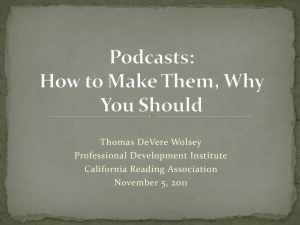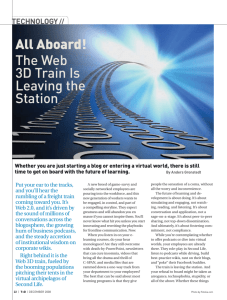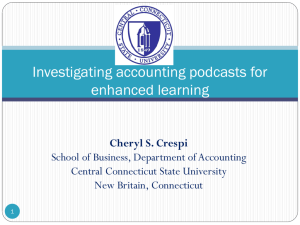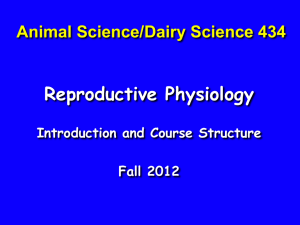Podcasting in the Classroom - St. John's University Unofficial faculty
advertisement
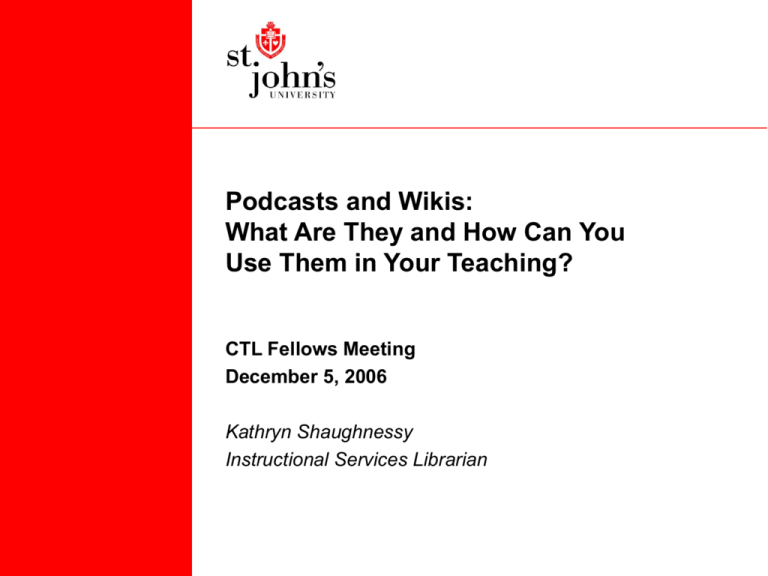
Podcasts and Wikis: What Are They and How Can You Use Them in Your Teaching? CTL Fellows Meeting December 5, 2006 Kathryn Shaughnessy Instructional Services Librarian Podcasting in the Classroom A podcast is… A growing method of delivering audio information – Time-shifted – Place-shifted • An informational “broadcast” saved as an audio file (mp3) and distributed via the web (strictly speaking via RSS) • Listeners download/listen at their convenience via desktop/laptop or on a personal player Podcasting in the Classroom Podcasting timeline… • August 2004: “iPodders” search for a way to retrieve old blogs and audiofiles – develop RSS (Winer) and podcast software (Curry) • July 2005: iTunes supports/distributes podcasts, get 1 million subscribers in first 2 days • August 2005: 8,000 podcasts, 6 million listeners • December 2005: Podcast selected as “Word of the Year” by editors of New Oxford American Dictionary: "a digital recording of a radio broadcast or similar program, made available on the Internet for downloading to a personal audio player" Hobson and Holtz Report, 8/4/2005 http://forimmediaterelease.biz/index.php/weblog/2005/08/05/ ) Oxford University Press, US website, http://www.oup.com/us/brochure/NOAD_podcast/?view=usa Podcasting in the Classroom Podcasting evolution … • Personal / information sharing • Business applications • Religious groups • Education & Distributed Learning Podcasting in the Classroom DUKE: benefits of podcasts in learning/instruction • playback of difficult content/material • multiple repetitions for listeners who have difficulty with English • allows for review/enjoyment of materials while multitasking (e.g.: commuting or exercising). • inspired creation of podcasts among listeners • increased “frequency and depth” of learner interaction, especially in language & music • increased communication between faculty, library and IT; led to improved collaboration and planning, both within & among institutions. Duke Report, 2004 - 2005 Podcasting in the Classroom Current Uses of Podcast /Webcast Resources in Academia – Reference-quality lectures (NPR, LOC, Stanford & Princeton) – Student Instruction / Orientation (Drexel) – Community News (U. of Western Ontario) – Outreach to potential students (Peterson’s) – Scholarly Communication (U. of Florida) – Audio tours (Purdue) Podcasting in the Classroom Finding Podcasts: Google search “podcast directory”: • iTunes http://www.apple.com/itunes/podcasts/ • iPodder.org http://www.ipodder.org/directory/4/podcasts/categories • Yahoo http://podcasts.yahoo.com/ – Blogs and your favorite websites (helps to keep up with Newsgator RSS feedreader, they merged with FeedDemon publisher so feed has capability to download the podcast in a compatible FeedStation player or right-click and “save-as”) – Coming Soon: iTunesU (Wiki collaboration) Podcasting in the Classroom Creating Podcasts: John’s Libraries: http://www.stjohns.edu/academics/libraries/resources/podcasts – Poetry Readings/ Author visits – Guest Lectures – Student essay winners, e.g.: Service Learning Essay – Instruction • Audio Tours • Resource Tutorials • Distributed Learning • Professional Development Podcasting in the Classroom Practical Questions for creating podcasts: – Investment of Money: • Computer (Laptop or Desktop) • Audio editing software (Audacity = free) • good microphone ($50) • headphone equipment ($40 - $60) Can record using a Laptop with Mic or purchase a digital Voice recorder ($40 – 80) to use with or without a lapel mic ($25) (see equipment handout for more information) Podcasting in the Classroom Practical Questions for creating podcasts: – Investment of time: • learning editing software -- not long to learn basics of Audacity • editing -- this takes the most time, if lengthy session • annotations – depending on how/whether you want to make it easy for your users to preview or skip to point within a podcast • Adding metadata – not long, but important • Uploading – not long Podcasting in the Classroom Technical Questions: – How many files/downloads can the server handle? • 8 minute podcast, saved bit rate 64 size: 7 MB time to download on T1: 10 seconds • 70 minute lecture, saved bit rate 64 size: 28 MB time to download on T1: 22 second – How do we index / store / retrieve? – How do we handle preservation/archiving of files Podcasting in the Classroom Legal Questions: – Release form for electronic recording • Library developed one, should have it approved by counsel – Clarify extent of distribution to lecturer • On main website: available to all • CMS or intranet: Although password protected, once in digital format, it is relatively easy to duplicate. Wikis in the Classroom What is a wiki? – Website that can be updated quickly, by many people • Good for collaborating on a big project or paper • Good for a site that covers dynamic content Editing capabilities can be open or password protected at site or page level Wikis in the Classroom How to use/incorporate a wiki? – External examples: • Wikipedia http://www.wikipedia.org/ • Encyclopedia of Earth http://www.eoearth.org/ – Internal examples: • DiscoverNY http://discoverny.pbwiki.com/Brazil • Podcasts http://podcastresources.pbwiki.com/ Podcasts and wikis in the Classroom • Strengths of using external/internal podcasts & wikis: – facilitates development of information literacy and life-long learning – enriches primary-resource research & reference base – coach vs. sage – facilitating/motivating individual learner inquiry and peer discussion – engages different styles of learning – assists low-vision and ESL students Podcasts and wikis in the Classroom Podcasting and wikis and future trends in academia – Scholarly publishing – Public/Open Access – Archives – E-Portfolios – ????? Podcasts and wikis in the Classroom Please contact me with any questions/suggestions – Kathryn Shaughnessy, x1454 Shaughnk@stjohns.edu St. John’s University Library
